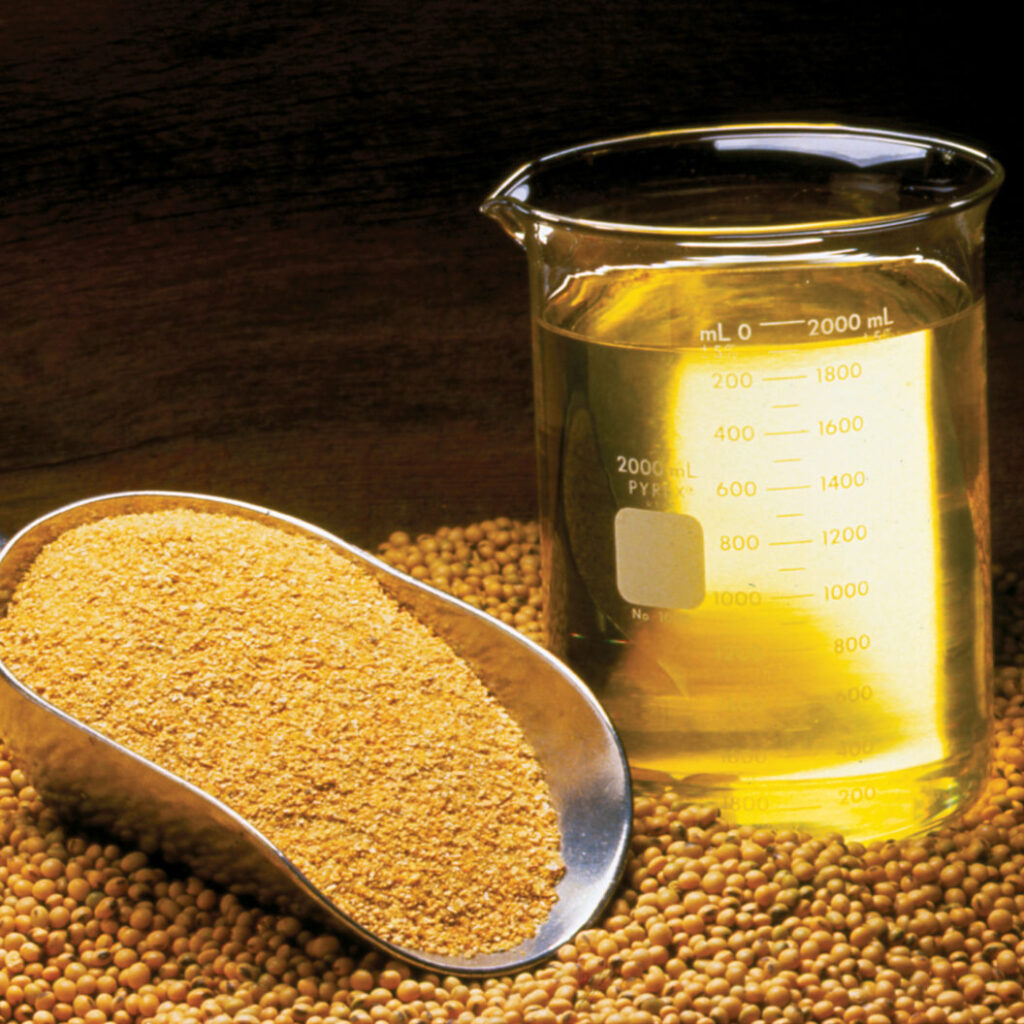Soybean oil, commonly known as soya oil, is one of the most consumed edible oils globally. Extracted from soybeans (Glycine max), this versatile oil is widely used in cooking, food processing, and even in industrial applications like biodiesel. With rising global demand for plant-based and healthier cooking alternatives, soybean oil has emerged as a vital agricultural commodity.
The global soybean oil industry is highly competitive, with several countries vying for dominance in production and export. However, one nation has consistently maintained its position at the top due to its scale of cultivation, advanced processing capacity, and vast export network. This article addresses the key question: Which country is the largest soya oil producer in the world? Through detailed analysis, we explore the top producer, industry dynamics, and how it shapes the global edible oil market.
The Importance of Soybean Oil in the Global Market

Soybean oil is not only a cooking essential but also a significant driver of the global oilseed economy. It accounts for over 28–30% of global vegetable oil consumption, making it a critical commodity in international trade.
Key Features of Soya Oil:
- High in polyunsaturated fatty acids (PUFAs)
- Rich in omega-3 and omega-6 fatty acids
- A good source of Vitamin K and E
- Neutral flavor and high smoke point
- Used in salad dressings, frying, baking, and as an emulsifier
Soybean oil is also a key feedstock in the production of biodiesel, especially in countries emphasizing renewable energy sources.
United States: The Largest Producer of Soya Oil in the World

The United States of America (USA) is the world’s largest producer of soya oil, thanks to its expansive soybean farming industry, cutting-edge processing infrastructure, and growing domestic and international demand.
Key Production Statistics:
- Annual Soybean Production: ~116–120 million metric tons
- Annual Soybean Oil Output: ~11.5 to 12.5 million metric tons
- Global Share: Around 30% of the world’s total soya oil production
- Top Producing States: Iowa, Illinois, Minnesota, Indiana, Nebraska
The USA’s robust soybean oil industry plays a key role in both domestic food consumption and international agricultural trade.
Factors Behind the USA’s Dominance in Soybean Oil Production
1. Massive Soybean Cultivation Area
The USA dedicates over 35 million hectares to soybean cultivation annually, making it the largest soybean producer alongside Brazil. This massive scale provides a steady and abundant supply of raw material for oil production.
2. Highly Mechanized Agriculture
U.S. farmers use cutting-edge technology, including GPS-guided equipment, drones, genetically engineered seeds, and precision irrigation systems, resulting in high yields and efficient harvests.
3. World-Class Oil Processing Infrastructure
The United States has hundreds of advanced soybean crushing and refining plants. Major companies like ADM (Archer Daniels Midland), Cargill, Bunge, and CHS Inc. dominate the industry, processing millions of tons of soybeans annually into oil and meal.
4. Biodiesel Industry Boost
A significant portion of soybean oil in the U.S. is used for biodiesel production, thanks to government-backed initiatives like the Renewable Fuel Standard (RFS). This policy support has created additional demand and driven up overall production.
5. Strong Domestic and Export Markets
Soybean oil is widely used in American households, restaurants, and food manufacturing. Additionally, the U.S. exports large quantities of soybean oil to countries like Mexico, South Korea, China, and the European Union.
A Closer Look at U.S. Soybean Oil Industry Dynamics

The United States combines agricultural scale, scientific innovation, and economic policy to dominate the soybean oil market. Over 60% of U.S. soybeans are crushed domestically to produce oil and soybean meal (used in animal feed). The remainder is exported as whole beans.
Key Industry Contributions:
- Food Industry: Salad oils, margarine, frying oils, and snacks
- Industrial Use: Biodiesel, lubricants, plastics, inks
- Livestock Industry: By-products like soybean meal are crucial for poultry and swine feed
The interconnected nature of soybean cultivation, processing, and secondary industries ensures a strong and stable soybean oil economy in the U.S.
Other Major Soybean Oil Producers
While the U.S. leads, other countries also contribute significantly to global soybean oil production:
Brazil: The Rising Giant
Brazil is the largest soybean producer in the world (by volume of raw beans), but slightly behind the U.S. in soya oil production due to its focus on raw bean exports.
Key Stats:
- Soybean Oil Output: ~9.5 to 10.5 million metric tons
- Top Growing Regions: Mato Grosso, Paraná, Rio Grande do Sul
- Strengths: Favorable climate, expansion into Cerrado regions
- Challenges: Infrastructure limitations, focus on export of unprocessed soybeans
Brazil is rapidly increasing its oil processing capacity and may soon rival the U.S. in soybean oil output.
Argentina: Export-Oriented Processing Power

Argentina is one of the top three producers and exporters of soybean oil.
Production Figures:
- Annual Output: ~7.5 to 8 million metric tons
- Top Processing Region: Rosario port region, Santa Fe province
- Export Focus: Strong emphasis on refined and crude oil exports, especially to India and China
Argentina processes almost all of its soybean production domestically, making it a leader in value-added soybean exports.
China and India: Major Consumers and Secondary Producers

- China: World’s largest importer of soybeans; domestic oil output around 3–4 million metric tons
- India: Soybean oil production around 1.5–2 million metric tons; large consumer but heavily dependent on imports
Both countries focus more on meeting domestic demand than becoming global exporters.
Nutritional and Economic Importance of Soybean Oil
Nutritional Benefits:
- Rich in polyunsaturated fats (good for heart health)
- Contains omega-3 fatty acids which help reduce inflammation
- Provides vitamin K and vitamin E, important for blood clotting and antioxidant function
- Zero cholesterol and low saturated fat
Economic Benefits:
- Vital export commodity
- Supports livestock feed industries via soybean meal
- Drives rural employment and economic activity
- Powers renewable energy goals through biodiesel
Challenges in the Soybean Oil Industry
1. Climate Change
Droughts, floods, and unpredictable weather patterns—especially in the Midwest USA and Brazil—threaten soybean yields and oil production.
2. Price Volatility
Soybean oil prices are tied to global supply-demand dynamics, biofuel policy shifts, and international trade relations (e.g., U.S.-China tariff wars).
3. Land Use Concerns
In Brazil and Argentina, the expansion of soybean cultivation is linked to deforestation and biodiversity loss in the Amazon and Cerrado regions.
4. GM Crop Regulations
The widespread use of genetically modified soybeans in the U.S., Brazil, and Argentina is controversial in certain markets like the European Union, affecting export opportunities.
Future Outlook and Opportunities
Expanding Biodiesel Market
Growing emphasis on green energy is expected to significantly increase soybean oil demand for biodiesel, especially in the U.S. and Brazil.
Sustainable Agriculture
Innovations in regenerative agriculture, carbon farming, and precision agriculture are expected to boost yields and reduce the environmental footprint.
Value-Added Exports
Developing nations can benefit by investing in oil refining and packaging facilities, shifting from raw bean exports to refined oil exports.
Rising Global Demand
Emerging economies in Africa and Southeast Asia are expected to become major consumers, creating new market opportunities.
Conclusion
The United States is the largest soya oil producer in the world, maintaining its lead through a combination of large-scale soybean cultivation, sophisticated processing infrastructure, and a diversified market that includes both food and energy sectors. While Brazil and Argentina follow closely, their emphasis on raw exports and infrastructure challenges keep them slightly behind in refined oil production.
As global demand continues to rise—driven by population growth, health trends, and renewable energy goals—the role of soybean oil will only expand. Understanding the dynamics of its production, particularly in top-producing nations, is essential for global food security, economic stability, and sustainable development.





Leave A Comment